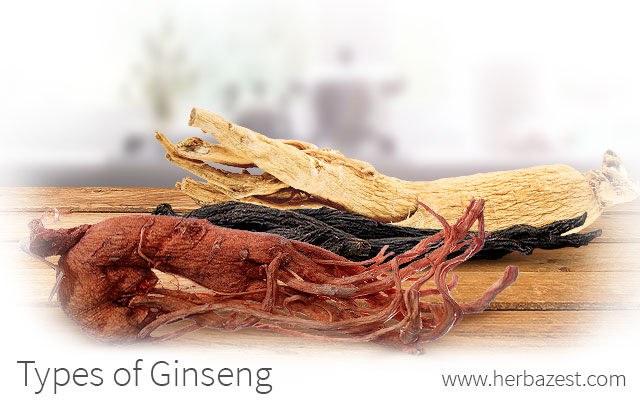While the highly valued Panax root is commercialized under many names that often lead to confusion, there are only two different types of ginseng. While Panax ginseng (P. ginseng) and American or wild ginseng (P. quinquefolius) share many benefits; however, they have different origins that result in specific uses.
Asian and American ginseng are not to be confused with Siberian ginseng (Eleutherococcus senticosus), which may look alike but belongs to a different genus and offers completely different benefits.
Characteristics of Ginseng
Both American and Asian ginseng belong to the Panax genus in the Araliaceae family. Ginseng is best recognized by its humanlike shape, with a light tan coloring and a gnarled root with stringy shoots resembling arms and legs. This has inspired the belief that both ginseng species are able to help heal the entire human body.
Both types of ginseng have a long growing period of up to 10 years, and forestlands with ample protective shade are their natural habitat.
After three years, both types of ginseng plant develop small white flowers that eventually become hard berries, which starts green but turns red through the fall. Ginseng berries are also a very valuable part of any type of Panax species.
Panax Ginseng
This ginseng species has been widely used for over 4,000 years. Commonly referred to as Asian or Korean ginseng, Panax ginseng is cultivated in Korea and other parts of Asia and exported to markets worldwide.
The root or rhizome of a ginseng plant is ready to be consumed in its raw form at less than four years old. The ginseng that is peeled and dried in sunlight after four to six years is referred to as white ginseng. Red ginseng, on the other hand, is one of the most popular varieties of ginseng, which is made by steaming and drying six-year-old ginseng.
THE DIFFERENT NAMES OF ASIAN GINSENG ARE REFERRED TO THE SAME ROOT OR RHIZOME AFTER UNDERGOING A SPECIFIC PROCESSING METHOD.
The main benefits of Asian ginseng are its abilities to lower blood pressure, improve mental performance, and stimulate metabolism.
Wild Ginseng
Wild ginseng, also known as American ginseng, is a ginseng species first discovered in Canada, but currently grown in many regions across North America.
Wild ginseng is harvested at between three and five years of age, when the seeds carried by the berries, are redistributed throughout the area to ensure natural propagation.
Wild ginseng has been used for hundreds of years as a general health tonic for its purported ability to stimulate immunity, as well as for treating respiratory infections and diabetes.
Differences between Asian Ginseng and Wild Ginseng
Ginseng plants have certain features that can be used to identify each type. An Asian ginseng plant begins with three oval leaflets with double-toothed borders, then grows an additional three to five leaflets, whereas Wild (American) ginseng is arranged in a whorl with three or four compound leaves, and each grows long leaflets.
The time of year that seeds are planted varies for American and Asian ginseng as well, with wild ginseng seeds typically planted in the fall, in contrast with Asian ginseng seeds, which are planted in the spring.
Best Type of Ginseng
Both Asian and wild ginseng offer great benefits, and both have been used to help treat a long list of health conditions thanks to their medicinal properties, so the best type of ginseng will be the one that better fits your individual needs:
More research has been conducted on Asian ginseng at this point, and it has been shown to be a great aid in lowering blood pressure, helping diabetes, and treating erectile dysfunction.
American or wild ginseng is commonly used as a preventative or booster. Wild ginseng tonics, energy drinks, and teas are often consumed to improve immunity and enhance cognitive functions. Topical creams are popular to help decrease or prevent signs of aging.
A large selection of both types of ginseng can be found in health stores and online, with prices varying based on brand and supplement size. The Panax root can be consumed raw and dried, but there are also a wide number of ginseng supplements available, including powder, drinks, capsules, and tablets
Ginseng is one of the most popular and easily-accessible medicinal herbs in the world. It is found in two different species based on where it is cultivated. Even though they are grown in different parts of the world, Asian ginseng and wild ginseng share similar makeup and beneficial properties.
Sources
- Ginseng: How to Find, Grow and Use North America's Forest Gold
- HortTechnology, Asian and American Ginseng – A Review, 1995
- North Carolina State University, Cooperative Extension, Care and Planting of Ginseng Seed and Roots
- The Book of Ginseng: And Other Chinese Herbs for Vitality
- The Korean Academy of Medical Sciences, Brief Introduction of Panax ginseng C.A. Meyer
- University of Maryland Medical Center, American ginseng




